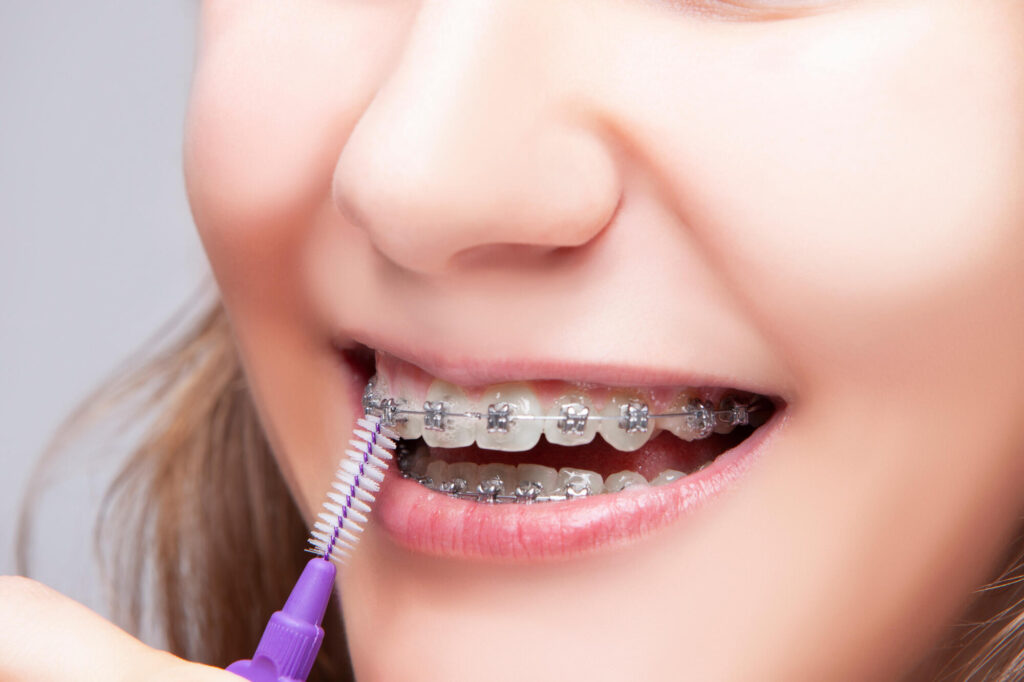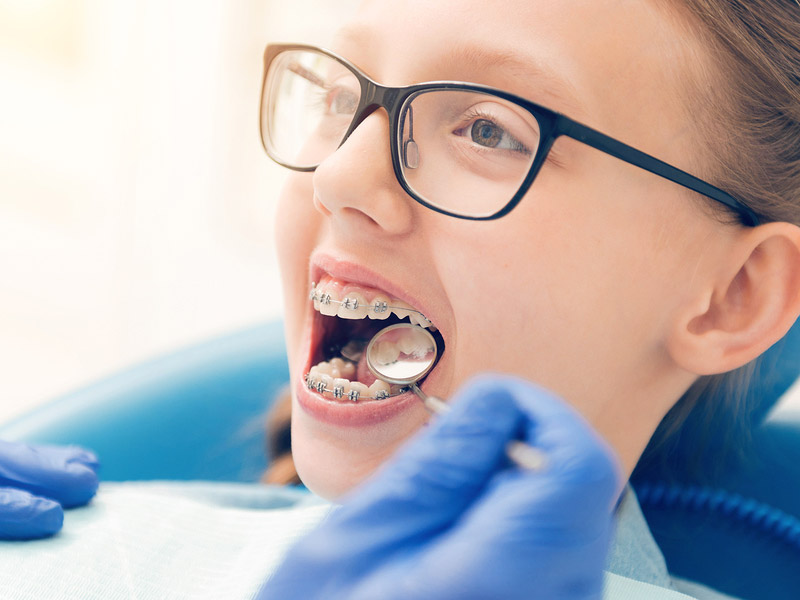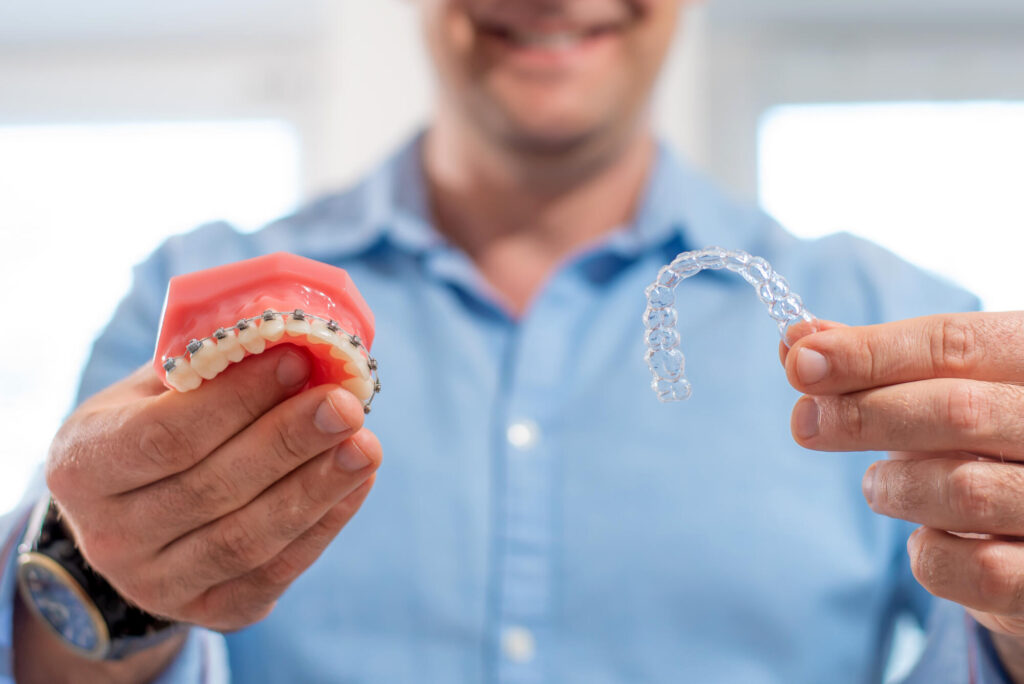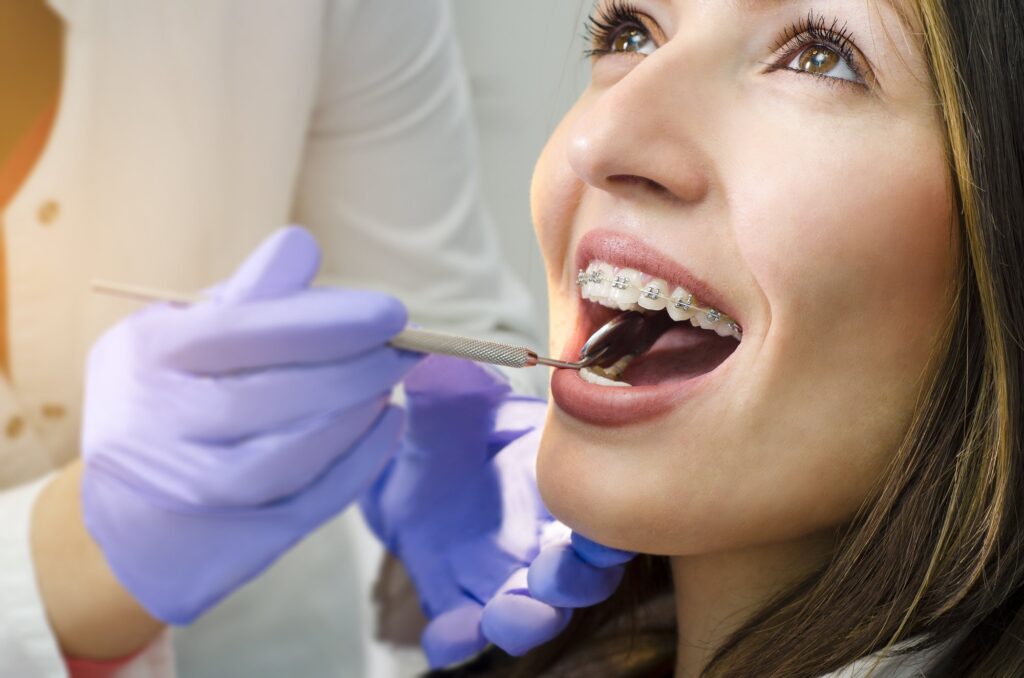August 21, 2024
If you look in the mirror and are less than satisfied with your smile, you are not alone as according to the American Association of Orthodontists, one in three patients needing braces in the United States are adults. One common alternative to wearing braces is using plastic aligners known as Invisalign.
Many people ask, “With Invisalign, how long does it take to see noticeable results?”. As each case is unique, understanding the Invisalign treatment duration can help set realistic expectations for how long it will take to achieve your perfect smile.
We will discuss the factors affecting Invisalign treatment to help you understand how long it might take for you.
Invisalign: How Long Does It Take?
Invisalign is a popular orthodontic treatment that uses clear, removable aligners to slowly straighten teeth from home. Unlike traditional braces, Invisalign is a more discreet and comfortable way to get a beautiful smile.
Invisalign works well for many types of alignment issues, including the following:
- Crowded teeth
- Gaps
- Mild to moderate bite problems
On average, the Invisalign process time ranges from 9 to 18 months. Some patients may achieve their ideal results in as little as 6 months, while others may need up to 24 months.
Invisalign treatment duration can vary based on several factors, including:
- Case complexity
- Patient compliance
- Patient age
Impact of Case Complexity on Treatment Duration
Simple cases, such as minor crowding or spacing issues, may have a shorter treatment time frame. More complex cases, like severe misalignment or bite issues, may need a longer treatment period.
Patient Compliance
Wearing your aligners for the recommended 20 to 22 hours per day is key to keeping up with your aligner timeline. Not wearing them for the recommended number of hours can prolong the Invisalign process time.
Also, skipping check-ups with our orthodontists can affect how long you need to wear Invisalign. These appointments allow our team to check your progress and make personalized adjustments to your aligners. Missing appointments can extend the time it takes to straighten your teeth.
Age Factor
Invisalign is effective for both teens and adults, but the treatment time frame can vary slightly for each group. Younger patients, whose teeth may move more quickly, might have a shorter treatment duration compared to adults.
The Clear Aligner Timeline
Invisalign involves several stages, each contributing to how long your Invisalign treatment will take. Here’s a breakdown of what to expect during the Invisalign process time:
Initial Consultation
During your first visit, our orthodontists will evaluate your teeth and discuss your goals. Based off this, we will decide if Invisalign is the right treatment for you based on their evaluation. This first visit usually lasts about an hour.
Custom Treatment Plan
If you and your SouthShore orthodontist choose Invisalign, we will create a treatment plan based on your individual needs. We will take digital scans or impressions of your mouth, so your aligners fit you perfectly. SouthShore Orthodontics has the technology to measure and print aligners in-house, reducing the time you’ll have to wait to start using them.
Wearing Aligners
Once you get your aligners, you’ll wear them on average for 20 to 22 hours a day. You’ll only remove your aligners to do the following:
- Eat
- Drink
- Clean your teeth
You will change to a new set of aligners every one or two weeks. These aligners will help move your teeth to their final position. The aligner-wearing phase can last anywhere from 6 to 24 months, depending on your treatment plan.
Regular Check-Ups
Regularly scheduled check-ups with your orthodontist will ensure your treatment is moving in the right direction. These appointments are usually scheduled every 6 to 8 weeks and last about fifteen to thirty minutes.
Final Adjustments
Once your teeth have moved into their desired position, your orthodontist may make final adjustments to perfect your smile. Any final adjustments typically take a few added weeks.
Retainers
Once you’ve completed your Invisalign treatment, wear retainers during certain times of the day to keep your new smile in place. Patients typically wear retainers for a longer period during the first few months after treatment, and then only at night.
Tips for Staying on Track with Invisalign
Staying on schedule with your Invisalign treatment is essential for achieving the best results within the expected time frame. Here are some of the best tips to help you stay on track with your Invisalign timeline.
Follow Your Treatment Plan
Stick to the aligner schedule provided by our orthodontists. Changing aligners too soon or too late or not wearing your aligners for long enough each day can impact your clear aligner timeline.
Maintain Oral Hygiene
Keeping your aligners and teeth clean is important to avoid delays caused by other dental issues. Brush and floss regularly, and clean your aligners every day.
Go to Check-ups
Don’t skip your orthodontist appointments. These check-ups help our orthodontist will:
- Monitor your progress
- Make adjustments to your treatment plan
- Answer any questions you have
Be Patient
Remember that the Invisalign process time is unique to each person. Staying patient and consistent will help you achieve the best possible results.
Although it will take some time, you’ll be able to achieve the smile you’ve always wanted by:
- Following our orthodontist’s advice
- Staying consistent with wearing your aligners
- Attending check-ups
Discover Your Perfect Smile at SouthShore Orthodontics
Invisalign offers a modern, flexible solution for those looking to straighten their teeth without the challenges of traditional braces. If you’re considering starting treatment with Invisalign, how long does it take to see results is likely one of your top questions.
If you’re looking for exceptional orthodontic care, look no further than SouthShore Orthodontics. At our practice, you’ll not only receive top-tier treatment but also enjoy a warm and welcoming atmosphere where your comfort is our priority. Our team works hard to make treatment plans just for you, so you can get the smile you’ve always wanted.
Schedule a free consultation today and start your journey to a confident, radiant smile!






